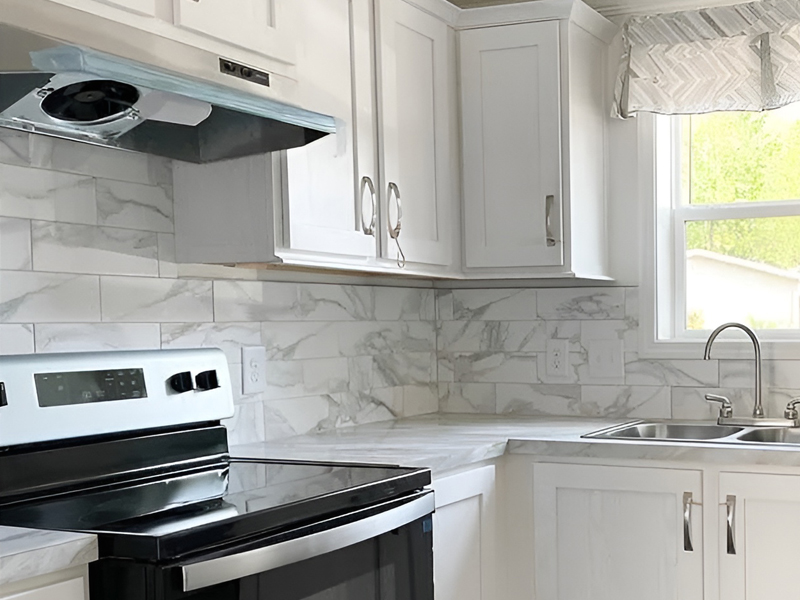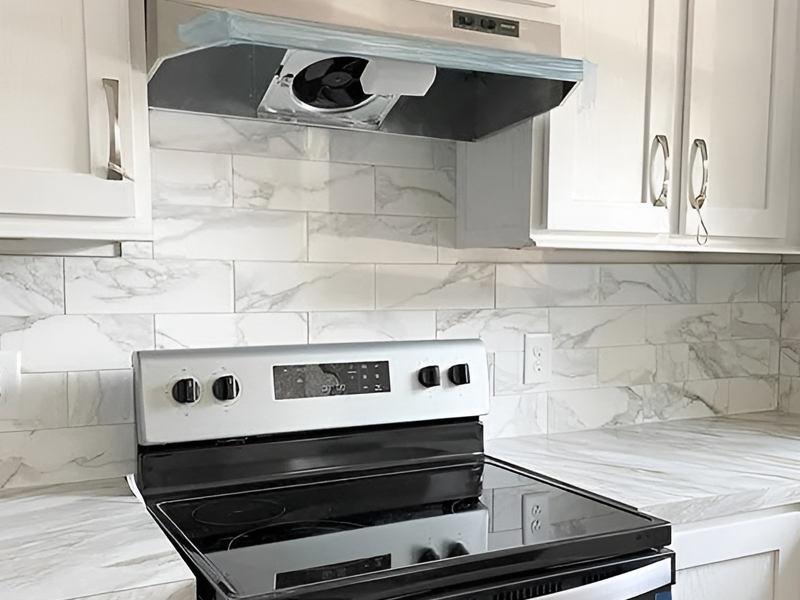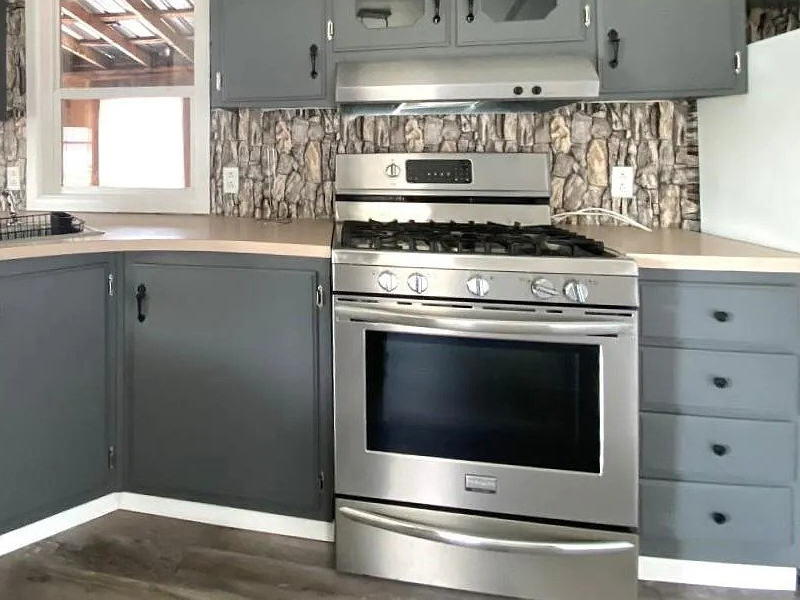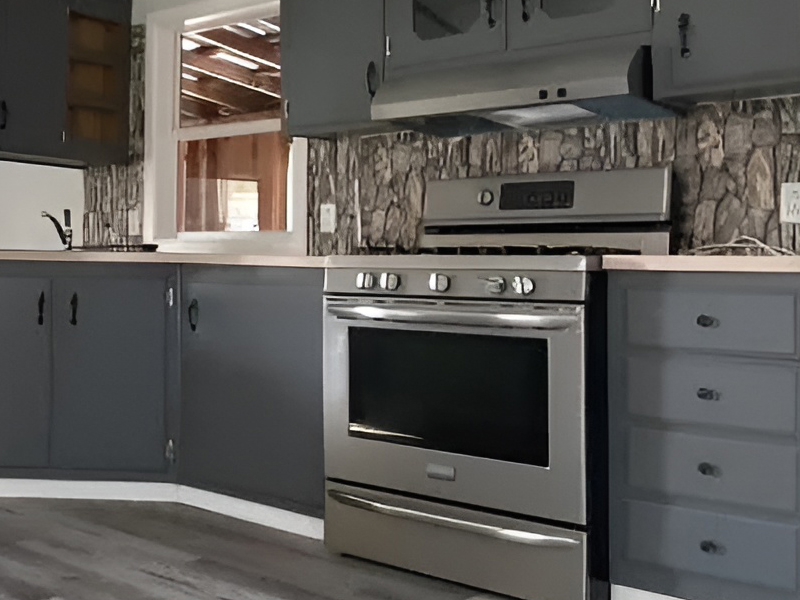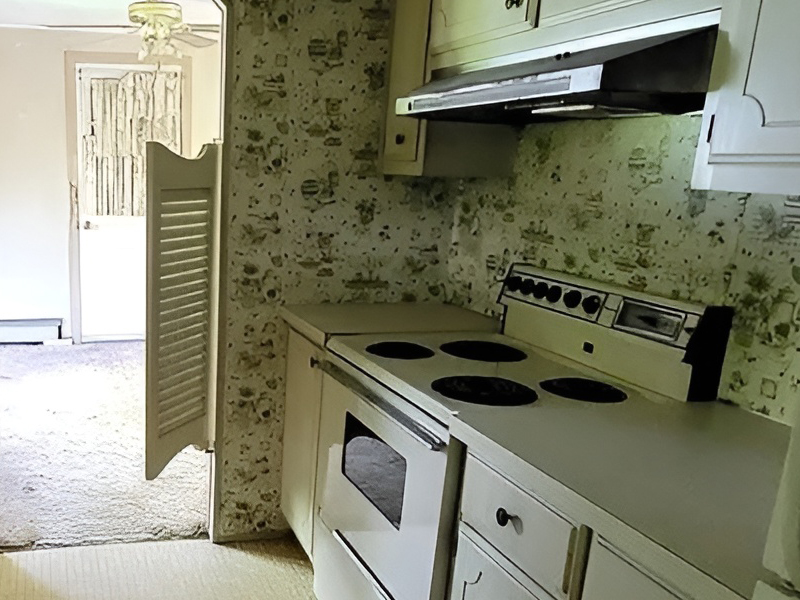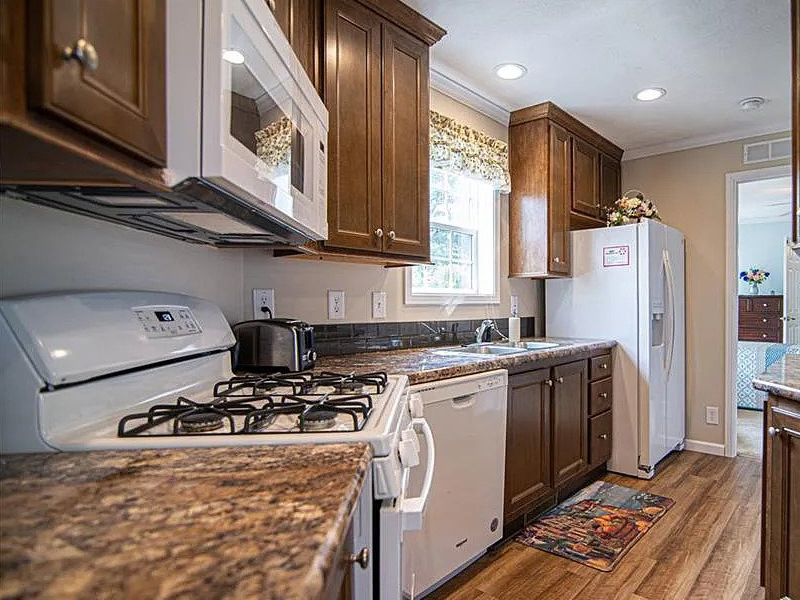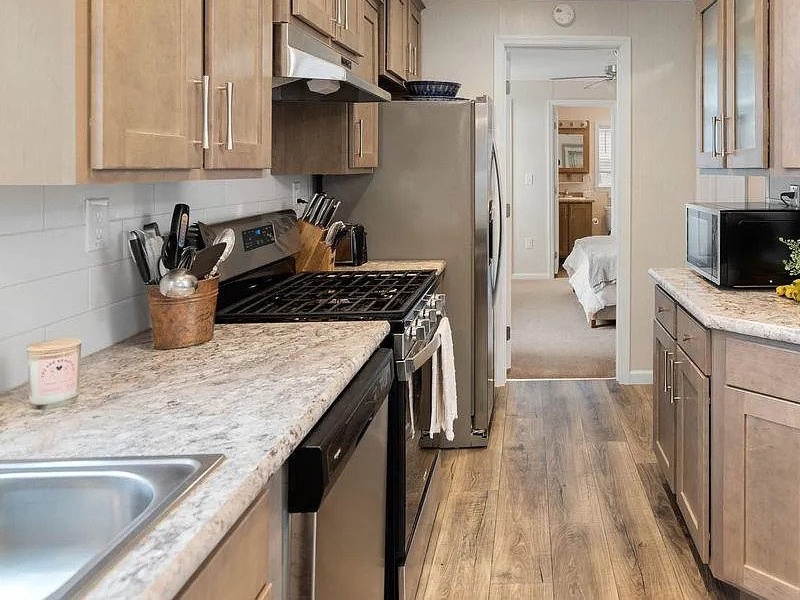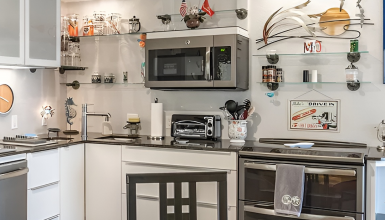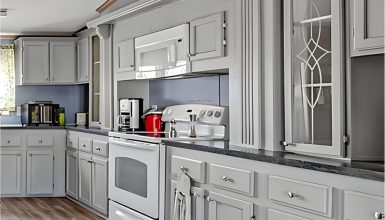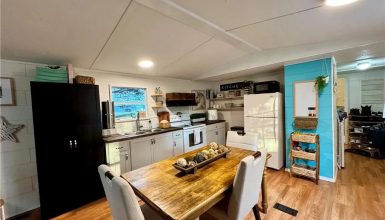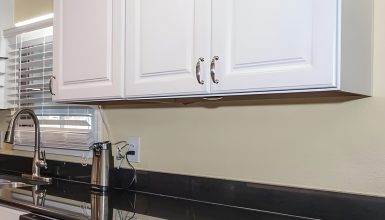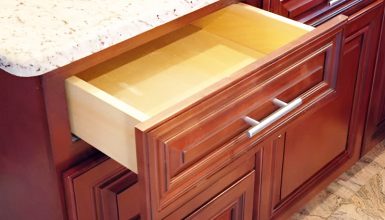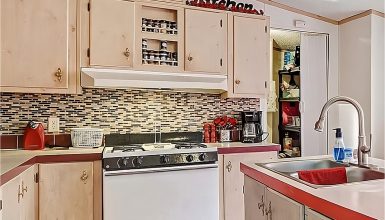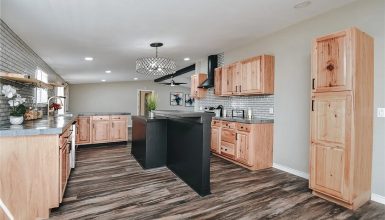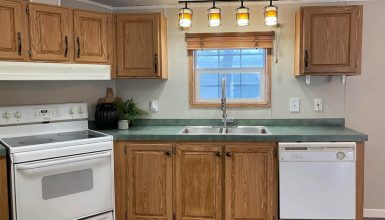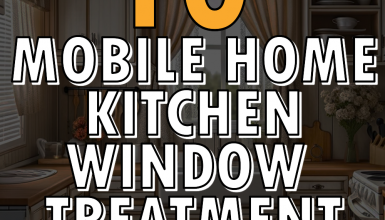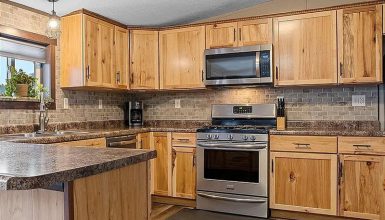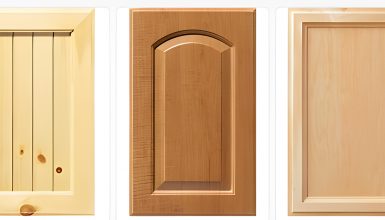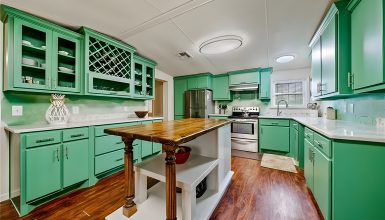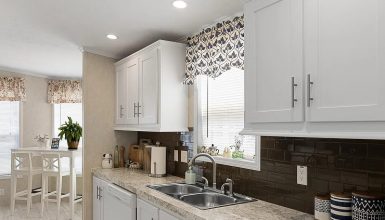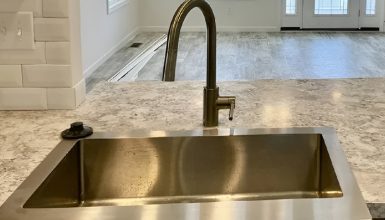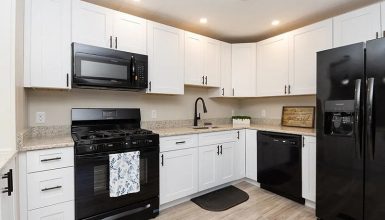Ready to breathe new life into your mobile home kitchen? Swapping out that tired old range hood can do just that! It isn’t just about aesthetics, though. A well-functioning range hood is a workhorse that reduces smoke, heat, and cooking odors. It makes your kitchen safer and more comfortable for creating culinary masterpieces.
But let’s be honest, replacing a range hood might feel a tad intimidating. Wires, ducts, and tools? Oh my! Don’t fret, though. We’ve got you covered. We’ll break down this home improvement project into bite-sized, doable steps. You’ll see; you can handle this!
So, let’s roll up those sleeves, grab our tools, and get to it. Your mobile home kitchen upgrade awaits!
What Is a Mobile Home Range Hood?
Alright, let’s get up close and personal with your range hood. What is it? Why do you need it? Let’s dive in!
A mobile home range hood is a ventilation unit installed above a mobile home kitchen stove. It’s designed to remove smoke, heat, cooking odors, and airborne grease from the air while you’re cooking.
It operates like a traditional range hood in a non-mobile home. It uses a fan and ductwork to draw air from the cooking area and either filter it and recirculate it back into the kitchen or vent it outside the home.
The main difference is that mobile home range hoods are often specifically designed to fit the smaller dimensions and unique configurations of mobile home kitchens. They are also typically designed for easy installation and removal, given the portable nature of mobile homes.
Range Hood Ventilation Systems
In a mobile home, there are two primary range hood ventilation systems types: ducted (or vented) and ductless (or recirculating).
- Ducted Ventilation System
These systems vent the air outside the mobile home, also known as vented or exhaust hoods. They pull air from the cooking area and pass it through a duct that leads outside. Effectively removing heat, smoke, and cooking odors from the kitchen. This type of system is generally more efficient at clearing the air. But it may require more complex installation, as it needs to be connected to a duct that leads outside.
- Ductless Ventilation System
Also known as recirculating hoods, these systems filter the air and then recirculate it back into the kitchen. Instead of venting air outside, a ductless system uses filters (typically carbon or charcoal) to remove smoke, odors, and particles and then recirculates the cleaned air back into the room. This type of system is easier to install since it doesn’t require ductwork. But the filters must be replaced regularly to maintain effectiveness.
In both systems, the range hood typically includes a light illuminating the cooking area and a fan speed control.
Types of Range Hoods for Mobile Homes
Okay, folks, now that we’ve got a handle on what a range hood does, let’s chat about the types that work well in mobile homes. Mobile homes offer unique spaces, and that’s part of their charm! But it also means we must be more thoughtful when choosing a range hood.
1. Under-cabinet range hoods
First up, we’ve got the under-cabinet range hoods. These little numbers are compact and perfect for mobile homes where space is at a premium. They tuck right into the space below your cabinets and above your stove. Neat and tidy, out of the way, but exactly where you need it when it’s time to cook.
2. Wall-mounted range hood
Next on the list is the wall-mounted range hood. These are for those who don’t mind showing off a little. They’re installed on the wall above your stovetop and don’t need any cabinets above them. They come in a variety of styles and finishes. So, if you’ve got a bit more space and want to make a statement, this could be your go-to!
3. Island range hoods
Then we have the island range hoods. These are designed for kitchens with a stove located on the center island. They hang from the ceiling and can be a focal point in your kitchen. They’re a bit more of a commitment in terms of installation. Still, this could be a fantastic choice if your mobile home has an open-plan layout with a kitchen island.
4. Insert range hood
And lastly, we’ve got the insert hoods or power packs. These are the ultimate undercover agents hidden inside a custom-built surround that matches your cabinets. You only see the bottom of the hood, so it’s a great choice if you want the hood to blend into your kitchen design.
Remember, while style is key, don’t forget about function. Think about how much and what type of cooking you do. Heavy-duty cooking might call for a hood with higher CFM (Cubic Feet per Minute) for better ventilation.
Signs That Your Range Hood Needs Replacement
So, you’ve got a range hood in your mobile home. Great! But how do you know when it’s time to say goodbye to the old one and hello to a shiny new one? Here are some telltale signs that your range hood might be singing its swan song.
- The range hood is not doing its job.
First off, it’s not doing its job. You’re cooking up a storm, but your kitchen smells like last night’s fish dinner or this morning’s bacon. Or maybe there’s a layer of grease on your cabinets that wasn’t there before. If your range hood isn’t sucking up the smoke, heat, and odors like it used to, it might be time for a replacement.
- Noisy
Next, listen. Hear that? That’s the sound of a noisy fan. If your range hood makes more noise than it used to or makes strange sounds, it could be a sign of motor failure. Not to mention, a noisy hood can be pretty annoying.
- Flickering
Another sign is a flickering or non-functional light. Most range hoods come with a built-in light to illuminate your cooking area. The wiring could be faulty if the light isn’t working correctly even after changing the bulb.
- Age factor
Then there’s the age factor. Even if your range hood doesn’t show any of the above signs, you might want to consider a replacement if it’s over 10 to 15 years old. Like all appliances, range hoods have a lifespan. A new one will likely be more efficient and offer better features.
Also, let’s not forget the appearance. If your range hood looks outdated or doesn’t match your kitchen’s new decor, swapping it out can give your space a fresh look.
Choosing the Right Replacement Range Hood
Alright, it’s time for the fun part – picking out your new range hood! This is where form meets function. Yes, we want a range hood that does its job, but we also want it to look good while doing it. So, how do we choose the right one? Let’s walk through it.
- Size
Size matters. First things first, your new hood needs to fit the space. Measure the width, depth, and height of the area where your current range hood is. Make sure the new hood is the right size to fit comfortably in that space.
In general, range hoods for mobile homes come in several standard widths, measured in inches:
- 24 inches: This is a common size for smaller cooktops, often found in compact mobile homes or kitchenettes.
- 30 inches: This is a standard size for many residential cooktops and is likely the most common size for a mobile home range hood.
- 36 inches: Larger mobile homes with more extensive cooking areas might use a 36-inch range hood.
- Power
Next, consider power. In range hood speaks, that’s CFM – cubic feet per minute. It measures how much air the hood can move. The more you cook, especially high-heat cooking like stir-frying or grilling, the higher the CFM you’ll want.
- Style
Then, think about style. Under-cabinet, wall-mounted, or island? Sleek stainless steel or a pop of color? This is a chance to let your personality shine. Pick a style that complements the rest of your kitchen and sparks a little joy every time you see it.
- Features
Don’t forget about the features. Some range hoods include extra perks like adjustable fan speeds, automatic shut-off, or heat sensors. Consider which features would be most beneficial for your cooking habits.
- Noise level
Lastly, keep in mind the noise level. Some range hoods can be quite loud when running at full power. If you like to listen to music or chat while you cook, look for a model known for quiet operation.
So, take your time, research, and choose a range hood that’s the perfect fit for you and your mobile home kitchen.
How to Replace a Mobile Home Range Hood
Get ready to roll up your sleeves and dive into this DIY project! But before we start, let’s ensure we have all the necessary tools and materials. Trust me, there’s nothing worse than being halfway through a job and realizing you’re missing a crucial tool.
Tools
- Screwdriver: This will be your best friend when removing the old range hood and installing the new one.
- Drill: Depending on your new range hood’s design, you might need to make new holes for screws or ductwork.
- Level: This is key to ensuring your new hood is installed straight. Nobody likes a crooked range hood.
- Safety gear: You’ll need a pair of safety goggles and work gloves. Safety first, my friends!
- Wire nuts: You’ll need some wire nuts and electrical tape for the wiring part. These will help you securely connect the wires and ensure a safe installation.
- Measuring tape: A measuring tape will come in handy, too. You’ll want to double-check all your measurements before drilling any holes.
- Ladder: And finally, don’t forget a ladder! Unless you’re super tall, you’ll need a little height boost to reach the spot where the range hood goes.
Preparing for the Replacement
Okay, we’ve chosen our new range hood and gathered our tools. It’s almost game time. But before we dive in, we need to prep our workspace. A little planning now will save us a whole lot of hassle later.
- Clearing
Start by clearing out your work area. Move any pots, pans, or other items that might get in the way. You’ll need plenty of elbow room for this task.
- Protect the cooktop
Next, protect your cooktop. Lay a soft cloth or cardboard over your stove to guard against accidental drops or spills. We want to replace the range hood, not the stove, right?
- Cut off the power
Now, let’s cut off the power. Safety first, always! Head to your circuit breaker and turn off the power to your kitchen. You don’t want any surprises when you start disconnecting wires.
- Loosen up the range hood.
Next, grab your screwdriver and loosen up the existing range hood. You don’t have to remove it just yet, but loosening the screws now will make the removal more straightforward when the time comes.
Finally, take a moment to review the instructions for your new range hood. Every model is a little different. Familiarize yourself with the steps you’ll need to follow.
Step-by-Step Installation of the New Range Hood
Now comes the moment we’ve been waiting for – the installation of our brand-new range hood. Don’t worry. We’re going to take this one step at a time. Ready? Let’s do this!
Step 1: Remove the old range hood
Take out the remaining screws holding the old hood in place with your trusty screwdriver. Be careful here. You don’t want it falling on you. Lower it gently and disconnect any wires.
Step 2: Prep the new hood
Unbox your shiny new range hood and remove any packaging. Check that you have all the necessary components.
Step 3: Line it up
Hold the new range hood up to the space where you will install it. Use your level to make sure it’s straight. Mark the spot where the screws will go with a pencil.
Step 4: Drill the holes
Put on your safety goggles and gloves, and use your drill to make holes where you’ve marked.
Step 5: Mount the range hood
Lift your new range hood to the pre-drilled holes. With your screwdriver, secure the hood into place.
Step 6: Wire it up
Now, let’s deal with the wiring. Connect the wires from your new hood to the wires in your mobile home. Typically, you’ll need to connect color to color – black to black, white to white. Secure them with wire nuts, and wrap them with electrical tape for extra safety.
Step 7: Check your work
Time to turn the power back on. Test the fan and light on your new range hood to ensure everything works.
Addressing Common Post-Installation Issues
Your new range hood is up, looking great, and ready to rock. But wait – what if you come across a hiccup or two? Don’t sweat it. Let’s walk through some common post-installation issues and how to tackle them.
- The fan isn’t working.
Double-check your wiring. Ensure all connections are secure and matched – black to black and white to white. If everything seems fine, the fan motor may be defective. In that case, you’ll need to contact the manufacturer or retailer.
- The light isn’t working.
First, try a new bulb. If it still doesn’t work, recheck your wiring. You may have a faulty light fixture if you’re still having trouble. You’ll need to contact the manufacturer or retailer.
- The range hood is too noisy.
Some noise is normal, especially at higher speeds. However, if it’s deafening, you may incorrectly install the fan, or the motor could be faulty. Check your manual for fan installation instructions, and if it’s still too noisy, contact the manufacturer or retailer.
- The range hood isn’t venting properly.
If your kitchen is still smoky or smells, check the filters. They may need a good cleaning. Also, ensure the ductwork is connected correctly, and the exterior vent is not blocked.
- The range hood is crooked.
Grab your level and check the alignment. If it’s off, you may need to adjust the screws holding the hood in place. Loosen them a little, straighten the hood, and tighten them back up.
Remember, calling in a pro is always a good idea when in doubt. Some issues might be more complicated, requiring a professional’s expertise. But with these tips, you’re well-equipped to troubleshoot common post-installation hiccups.
Conclusion
Range hood replacement isn’t just about adding a shiny new appliance. It’s about making your kitchen a safer, more comfortable place to whip up those delicious meals. So here’s to less smoke, less odor, and more joyful cooking!

